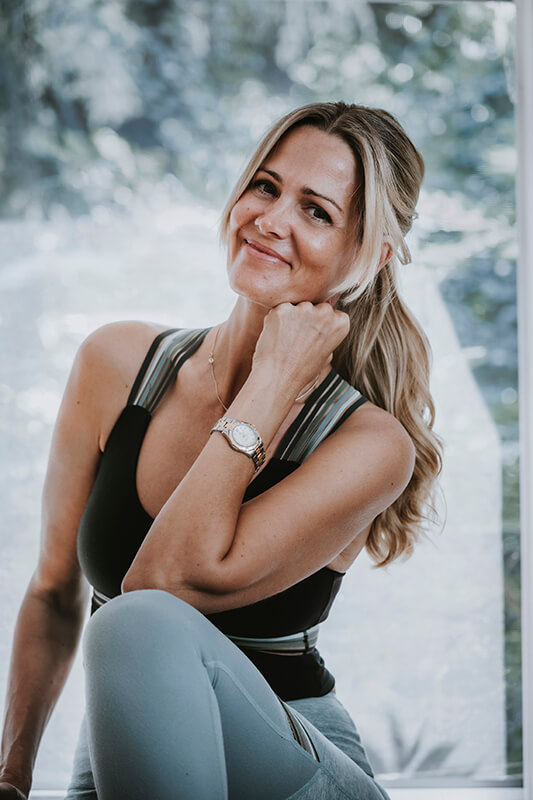Part scientist, mechanical genius, and anatomist, Joseph Pilates accompanied his method by a variety of equipment he referred to as “Apparatus.” The Apparatus was designed to help accelerate the process of stretching, strengthening, and body alignment, and increased core strength started by the Matwork. The most popular piece today, the Reformer, was originally called the Universal Reformer, aptly named for “universally reforming the body.” Eventually, more equipment and accessories were designed by Pilates, including the Cadillac, Wunda Chair, High “Electric” Chair, Spine Corrector, Ladder Barrel, and Pedi-Pole.
Pilates focuses on seven principles:
Concentration
Pilates demands intense focus: “You have to concentrate on what you’re doing all the time. And you must concentrate on your entire body for smooth movements.” This is not easy, but in Pilates, the way that exercises are done is more important than the exercises themselves.
Control
“Contrology” was Joseph Pilates’s preferred name for his method and it is based on the idea of muscle control. “Nothing about the Pilates Method is haphazard. The reason you need to concentrate so thoroughly is so you can be in control of every aspect of every moment.” All exercises are done with control with the muscles working to lift against gravity and the resistance of the springs and thereby control the movement of the body and the apparatus. “The Pilates Method teaches you to be in control of your body and not at its mercy.”
Centering
For practitioners to control their bodies, they must have a starting place: the center. The center is the focal point of the Pilates Method. Many Pilates teachers refer to the group of muscles in the center of the body—encompassing the abdomen, lower and upper back, hips, buttocks, and inner thighs—as the “powerhouse”. All movement in Pilates should begin from the powerhouse and flow outward to the limbs. This is the main focus of Pilates. It does this to strengthen the rest of the body. This can have effects for years to come if you are consistent with the exercise.
Flow
Pilates focuses on the efficiency of movement, creating flow through the use of appropriate transitions. Once precision has been achieved, the exercises are intended to flow within and into each other in order to build strength and stamina. In other words, the Pilates technique asserts that physical energy exerted from the center should coordinate movements of the extremities: Pilates is flowing movement outward from a strong core.
Precision
Precision is essential to do Pilates correctly. The focus is on doing one precise and perfect movement, rather than many halfhearted ones. Pilates is here reflecting common physical culture wisdom:” You will gain more strength from a few energetic, concentrated efforts than from a thousand listless, sluggish movements”. The goal is for this precision to eventually become second nature, and carry over into everyday life as grace and economy of movement.
Breathing
Breathing is very important in the Pilates method. Increasing the intake of oxygen and the circulation of this oxygenated blood to every part of the body is vital to cleansing and invigorating the body. Correct inhalation and complete exhalation are key to this.
Students are taught to use their “powerhouse” throughout life’s daily activities. According to Joseph Pilates, the powerhouse is the Centre of the body and if strengthened, it offers a solid foundation for any movement.

